Different Cell Phone Brands Of Wireless Charging Compatible With Each Other?
1. introduction
Fast charging for mobile phones has entered a phase of rapid development in the last two years, from the very beginning of 5V 1A to the current 200W fast charging. While wired fast charging is growing rapidly, the same to wireless charging too.
And what we are going to talk about today is also related to wireless charging for mobile phones.
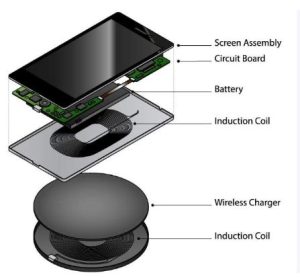
The main method of wireless charging technology used in mobile phones is through electromagnetic induction, and the main charging standards are Qi and PMA (Power Matters Alliance), both are operating in similar ways, just using different transmission frequencies and connection protocols: 100-205kHz and 277-357kHz.
Therefore, mobile devices that are compatible with one standard are not necessarily compatible with the other; however, some devices are compatible with both standards.
We need to briefly understand how the wireless charger works: according to the schematic diagram of the components, the inside of the wireless charger consists of a coil of wire around a magnet. Once the current passes through the wire, the moving charge creates an electromagnetic field around the magnet, and the strength of the magnetic field fluctuates; this changing magnetic field generates alternating current in the induction coil of the phone, and the induction coil in turn passes through a rectifier circuit to converted to DC power. Finally, the DC charges the battery or provides operating power.
With a wireless charging standard, the charging pad essentially “asks” the phone if it has a receiver that corresponds to the standard.
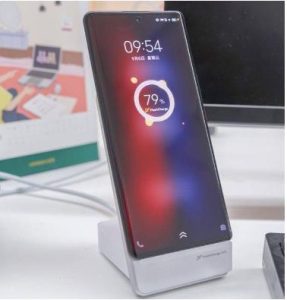
But due to the conversion efficiency and charging form, as well as with other problems, most of the wireless charging power is not high, compared to wired charging, the charging speed is much slower, that is why many users mind.
However, to domestic mobile phone manufacturers, this is not a problem.
In order to bring a better wireless charging experience, they are thinking of developing their own mobile phones fast wireless charging, then 40W, 50W wireless appear , and even 80W wireless fast charging.
Mobile phone wireless fast charging has three members: the charger, wireless charger, and mobile phone. A specific charger with a specific wireless charger for a specific phone charging, but how it will be if change any one of them? After all, users have more and more chargers in hands, so we do a real test.
2.Charging test
1) Xiaomi
Xiaomi is the mobile phone manufacturer who develops fast charging quicklier, whether wired or wireless, we test the following:
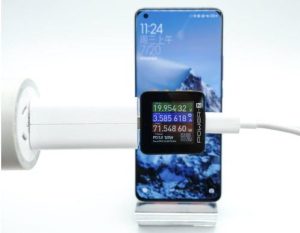
Use Xiaomi 120W GaN charger with C to C cable to connect Xiaomi 80W wireless charger, putting Xiaomi 11 Pro on top of the wireless charger, the output power of the charger is 19.95V/3.58A, 71.54W, you can see that it has triggered the wireless fast charging successfully.
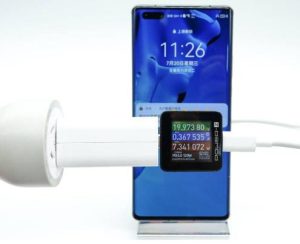
Try a different member, replace the Xiaomi 11 Pro with the Huawei Mate40 Pro, at this point, the charger output is 19.97V/ 0.36A, 7.34W, it keeps at the regular wireless charging mode.
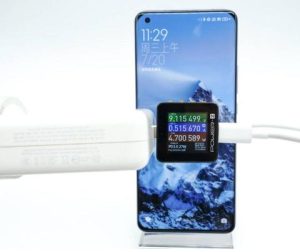
Switching another member, replace the Xiaomi 120W GaN charger with an Apple 140W GaN charger, still charging the Xiaomi 11 Pro wirelessly, the charger’s output is 9.11V/0.51A, 4.7W, in a regular wireless charging mode.
Summary
Through this test, changing one of the three members (charger, wireless charger, mobile phone), are unable to trigger the fast wireless charging, can only trigger the regular wireless charging.
2) Huawei
Huawei has likewise developed wireless fast charging technology for its own phones, check it out below.
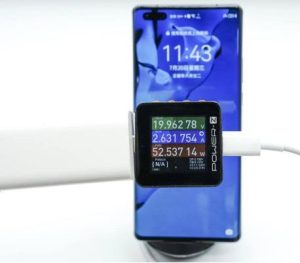
This is using the Huawei 65W charger to power the Huawei 50W wireless charger, placing the Huawei Mate40 Pro on the wireless charger, the output of the charger is 19.96V/2.63A, 52.53W, the wireless fast charging is successfully triggered.
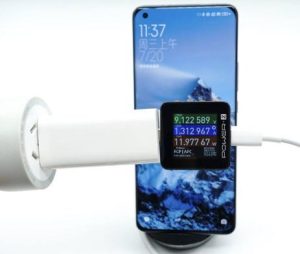
Looking at a different model, replace the Huawei Mate40 Pro with the Xiaomi 11 Pro, the charger’s output is 9.12V/1.31A, 11.97W, in a regular wireless charging mode.
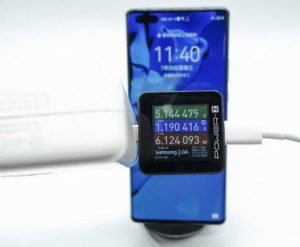
Changing another member, replace the Huawei 65W charger with an Apple 140W GaN charger, the output of the charger is 5.14V/1.19A,6.12W, in a regular wireless charging mode.
Summary
After testing, Huawei Mate40 Pro’s wireless charging scenario is the same, the phone, the charger, changing any of them can not trigger wireless fast charging, only with the official accessories can trigger fast charging.
3) One Plus
Finally, let’s take a look at One Plus, test the One Plus 9 Pro, which supports 50W wireless fast charging.
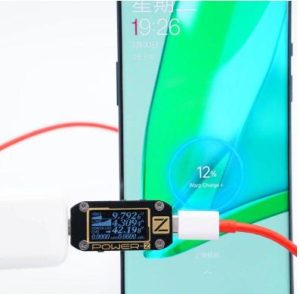
Using the OnePlus 65W charger to power the OnePlus 50W wireless charger, the OnePlus 9 Pro was placed on the wireless charger, the output was 9.79V/4.3A, 42.19W, successfully triggering the wireless fast charging.
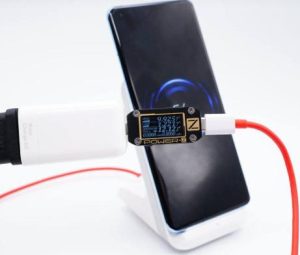
Replacing the One Plus 9 Pro with the Xiaomi 11 Pro, the charger output was 9.92V/1.22A, 12.12W, in regular wireless charging.
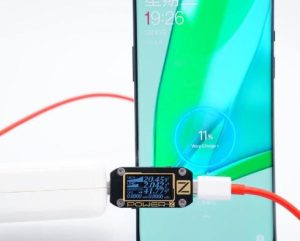
Switching another member, replace the One Plus 65W charger with an Apple 96W charger, the output is 20.45V/2.04A, 41.77W, which also triggers wireless fast charging.
Summary
A simple test of wireless charging on the OnePlus 9 Pro was conducted, and unlike Xiaomi Huawei above, when the charger was replaced, it still supported wireless fast-charged. But replacing phone, it was in a regular wireless charging mode.
4) iQOO
Finally, let’s take a look at iQOO, test iQOO 8 Pro, which supports 50W wireless fast charging.
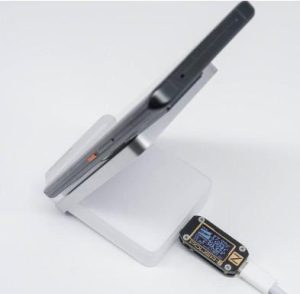
Using the iQOO 120W charger to power the iQOO 50W wireless charger, the iQOO 8 Pro was placed on the wireless charger, output power was 17.32V/2.9A, 50.32W, it successfully triggered wireless fast charging.
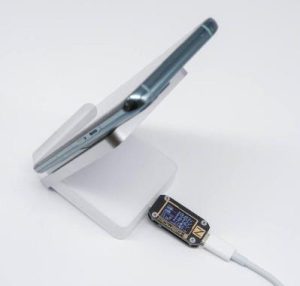
Try a different member, replace the phone with a OnePlus 9 Pro, the wireless charger is 10.83V/1.61A, 17.47W, faster comparing to regular wireless charging, but still much slower than the wireless charging power of the iQOO 8 Pro.
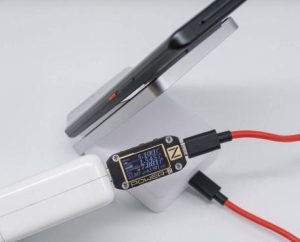
Finally, the charger was replaced with an Apple 96W charger, the output of the charger was 5.1V/1.54A,7.88W, in a regular wireless charging mode.
Summary
Changing any of the three members can not achieve the ideal wireless fast charging, so for iQOO 8 Pro wireless charging, still recommend to use the official charging accessories.
As so many phone models, we can not test all of them, so the above test is only to provide some reference.

Putting the test data together, to achieve wireless fast charging, the phone, the wireless charger, and the charger all need to be specific. Changing any of them won’t achieve wireless fast charging.
The only test scenario for the one plus, the wireless charger connecting to the one plus 65W replaced by Apple 96W, can still trigger wireless fast charging.
Wireless fast charging allows the phone to be charged conveniently and also have a very fast charging speed. Just advise that when you charge your phone wirelessly, you should try to choose official charging accessories.
